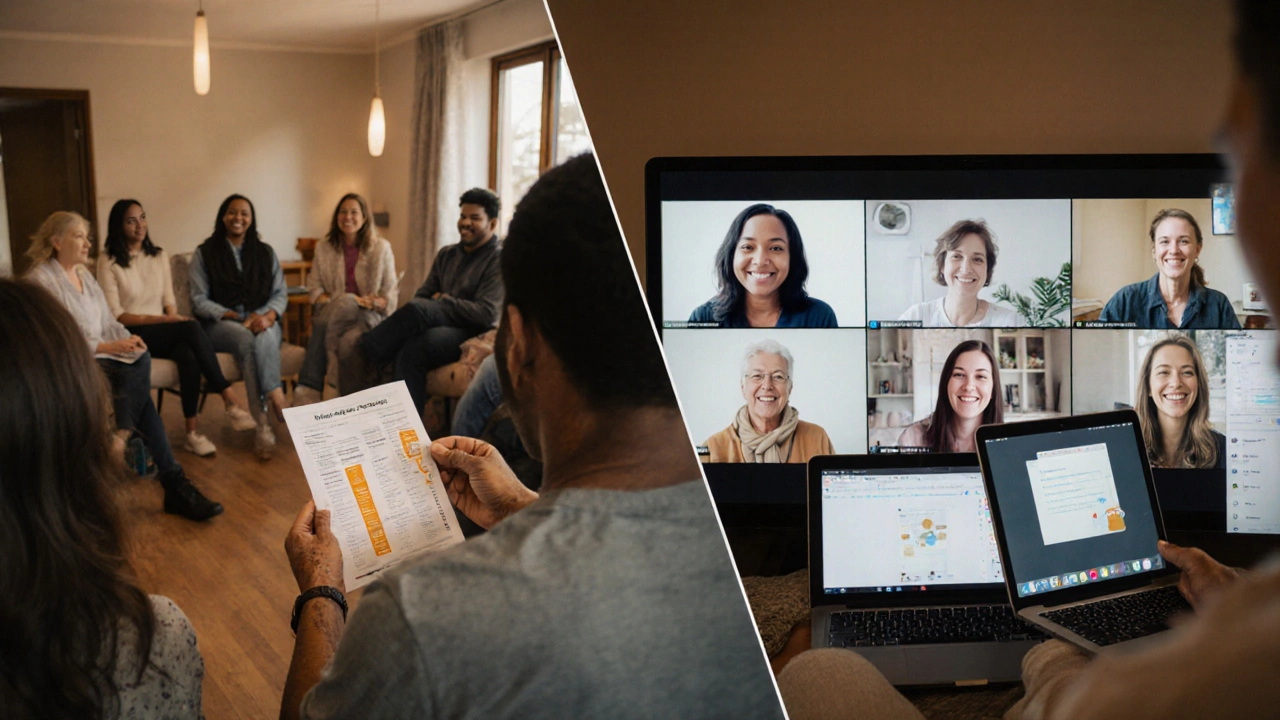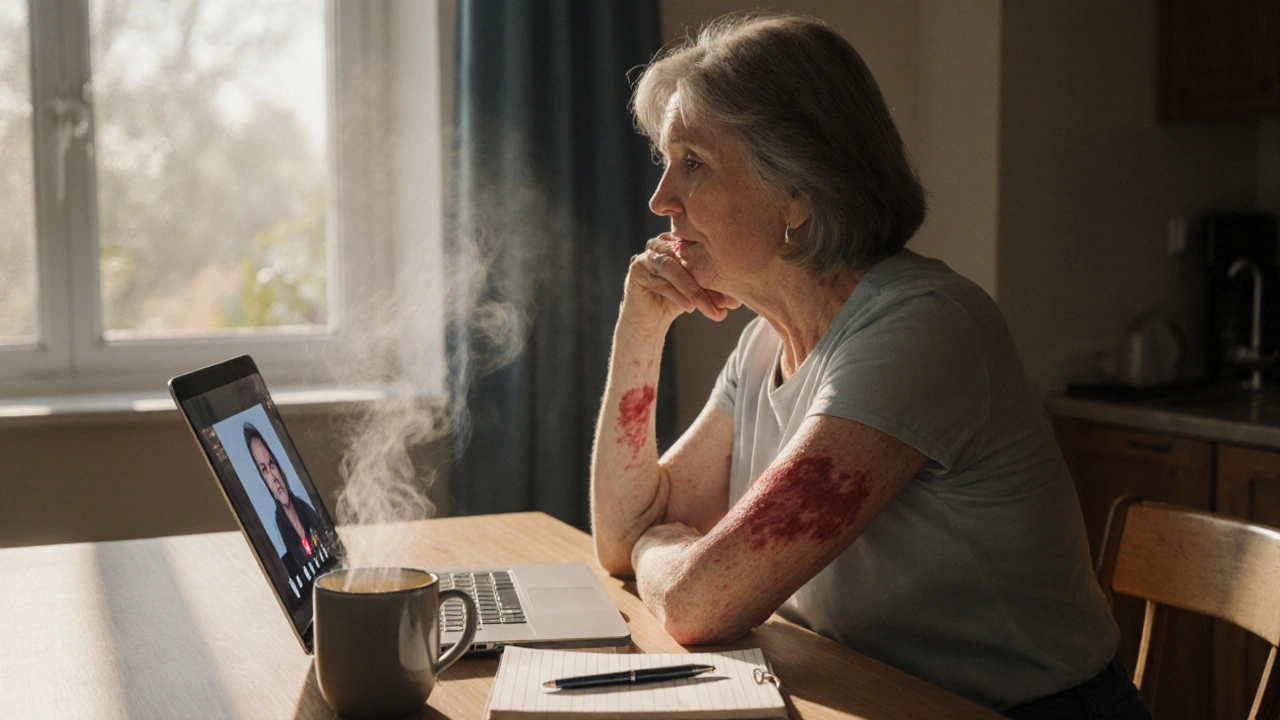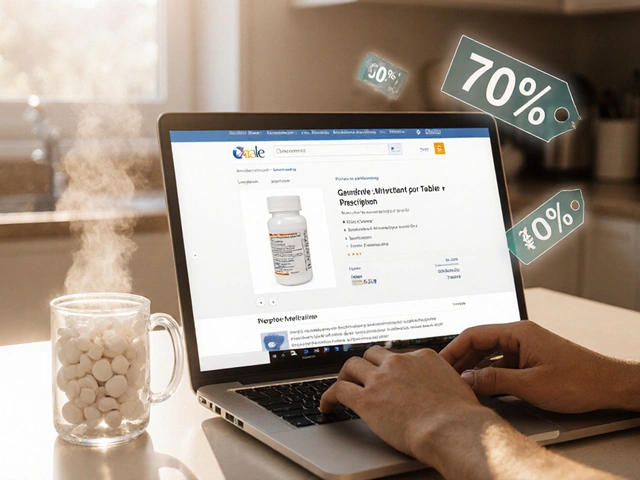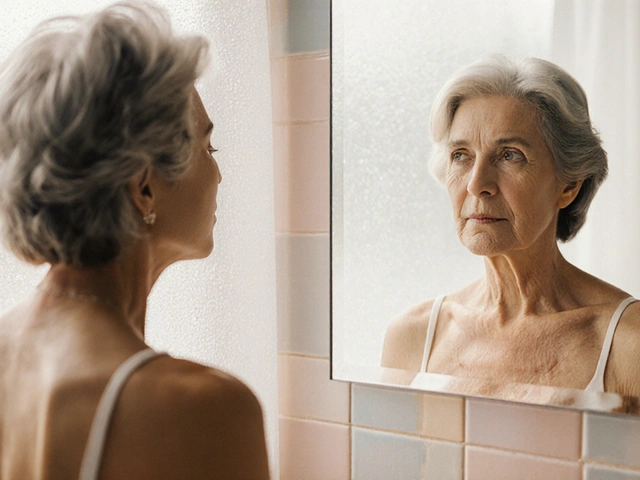Imagine being diagnosed with a rare skin cancer that takes years to show clear signs, and suddenly finding out you’re not alone. That’s the reality for many living with Mycosis Fungoides, a form of cutaneous T‑cell lymphoma (CTCL) that often starts as itchy, scaly patches and can evolve into tumors. The confusion, the fear, and the endless appointments can feel overwhelming. One of the most powerful tools that cuts through that isolation is a well‑run support group.
Why Support Groups Matter in Mycosis Fungoides Care
Support groups act as a bridge between medical treatment and everyday life. They give patients a place to share symptoms, ask practical questions, and learn coping strategies that doctors may not cover in a 15‑minute visit. Studies from the National Cancer Institute show that patients who engage in peer support report a 30% higher treatment adherence rate and a measurable boost in emotional well‑being. For a disease as variable as Mycosis Fungoides, that extra adherence can translate into better skin outcomes and slower disease progression.
Key Benefits of Joining a Support Group
- Emotional validation: Hearing someone else describe the same itching, anxiety, or hair loss tells you your feelings are legitimate.
- Practical tips: Members exchange advice on skin‑care routines, sunscreen choices, and how to talk to dermatologists about side‑effects.
- Access to resources: Many groups maintain curated lists of clinical trial sites, financial assistance programs, and patient‑advocacy organizations.
- Improved quality of life: Regular participation reduces isolation scores on the Hospital Anxiety and Depression Scale by an average of 4 points.
- Empowerment: Knowing you can contribute to the conversation shifts the role from passive patient to active partner in care.
Types of Support Groups Available
Support groups come in several formats, each with its own strengths. Below is a quick comparison to help you decide which fits your lifestyle.
| Feature | In‑Person | Online |
|---|---|---|
| Interaction style | Face‑to‑face, hands‑on activities | Video calls, chat boards, forums |
| Geographic reach | Local or regional | National or global |
| Privacy level | Higher physical privacy, but limited anonymity | Can use pseudonyms; may feel less personal |
| Schedule flexibility | Fixed meeting times, often weekly | Asynchronous posts, live streams at varied times |
| Resource sharing | Handouts, local expert visits | PDF libraries, recorded webinars |
How to Find a Reliable Mycosis Fungoides Support Group
Finding the right group is easier than you think. Start with these trusted sources:
- Dermatology clinics often post bulletin‑board notices for local gatherings.
- National organizations such as the Cutaneous Lymphoma Foundation maintain a searchable directory of both in‑person and virtual groups.
- Hospitals with oncology departments may host monthly “patient‑partner” sessions that include Mycosis Fungoides patients.
- Social media platforms like Facebook have private groups titled “Mycosis Fungoides Support Community” where moderators verify members before entry.
- Online health portals (e.g., Healthline, RareDiseases.info) list curated forums that follow HIPAA‑compliant privacy rules.
When you contact a group, ask these three questions to gauge suitability:
- Who leads the meetings - a trained facilitator, a dermatologist, or a peer volunteer?
- What topics are covered - treatment updates, lifestyle tips, mental‑health workshops?
- How is confidentiality handled - are sessions recorded, and are personal stories anonymized?

Best Practices for Getting the Most Out of a Support Group
Joining a group is just the first step. To truly benefit, treat the experience like a partnership with your care team.
- Come prepared: Write down questions you want to ask before each meeting.
- Share responsibly: Offer your experience, but avoid giving medical advice unless you’re a licensed professional.
- Take notes: Record useful tips on skin‑care products, appointment preparation, or insurance tricks.
- Follow up: If a member mentions a promising clinical trial, ask your dermatologist to verify eligibility.
- Stay consistent: Regular attendance builds trust and lets you see progress in your own emotional health over time.
Case Study: How a Vancouver Support Circle Changed One Patient’s Journey
Emily, a 42‑year‑old graphic designer from Vancouver, was diagnosed with early‑stage Mycosis Fungoides in 2022. She felt her dermatology appointments focused heavily on topical steroids, leaving her worried about long‑term skin thinning. After joining a local in‑person support circle led by a nurse practitioner, Emily learned about phototherapy scheduling, sunscreen brands safe for her skin type, and a provincial financial assistance program for light‑therapy sessions. Within six months, Emily’s itch intensity dropped from a daily 8/10 to a manageable 3/10, and she reported feeling “more hopeful” thanks to the community’s encouragement. Her story illustrates how peer knowledge can fill gaps that clinicians, due to time constraints, might miss.
When a Support Group Isn’t Enough
While support groups are invaluable, they don’t replace professional mental‑health care. If you notice persistent depression, panic attacks, or thoughts of self‑harm, reach out to a licensed therapist or psychiatrist. Many cancer centers have psycho‑oncology services that specialize in coping with chronic skin cancers. Combining professional counseling with peer support often yields the best outcomes.

Future Trends: Digital Platforms and Personalized Communities
Technology is reshaping how patients connect. AI‑driven platforms now match members based on disease stage, treatment regimen, and even geographic climate (important for sun‑sensitive skin). Mobile apps allow real‑time symptom tracking that can be shared anonymously with the group, creating a collective data set that researchers use to spot early side‑effect patterns. Keep an eye on emerging tools like “LymphomaConnect,” which promises encrypted video rooms and a built‑in medication reminder system.
Quick Takeaways
- Support groups provide emotional validation, practical advice, and improved treatment adherence for Mycosis Fungoides patients.
- Choose the format- in‑person or online- that matches your schedule and privacy comfort.
- Start with reputable sources such as dermatology clinics, national foundations, or vetted online forums.
- Engage actively: ask questions, take notes, and follow up on shared resources.
- Combine peer support with professional mental‑health services when needed.
Frequently Asked Questions
What is Mycosis Fungoides?
Mycosis Fungoides is the most common type of cutaneous T‑cell lymphoma. It usually starts as red, scaly patches on the skin that may become thicker plaques or tumors over many years.
How can a support group improve my treatment outcomes?
Groups share real‑world tips on medication side‑effects, appointment preparation, and lifestyle adjustments. This knowledge helps patients stay on schedule, manage side‑effects better, and feel motivated to continue treatment.
Are there free Mycosis Fungoides support groups?
Yes. Many nonprofit organizations, hospital outreach programs, and online forums operate at no cost. Check the Cutaneous Lymphoma Foundation or local hospital community services for listings.
What should I look for in a group facilitator?
Ideally a qualified health professional (dermatologist, nurse practitioner) or a trained peer‑leader with experience in CTCL. They should enforce confidentiality, keep discussions evidence‑based, and encourage balanced sharing.
Can I start my own support group?
Absolutely. Begin by contacting a local hospital’s patient‑services department for space, recruit members through clinic flyers, and set clear guidelines for privacy and topics. Online platforms like Zoom or dedicated forum software can supplement in‑person meetings.






Sen Đá
October 13, 2025 AT 16:50Ensuring that a support group is led by a qualified health professional reduces misinformation and safeguards patient safety. When facilitators possess clinical credentials they can steer conversations toward evidence‑based practices while still allowing peer sharing. The presence of a dermatologist or nurse practitioner also encourages members to ask detailed treatment questions without fearing judgment. Therefore, vetting the leadership structure should be a pre‑meeting priority.
LEE DM
October 19, 2025 AT 16:50Inclusion of both in‑person and virtual options respects diverse lifestyles and geographic constraints. These hybrid models expand access while preserving personal connection.
Shaik Basha
October 25, 2025 AT 16:50Yo, I’ve tried the Zoom meetups and they’re super chill, no need to drive miles.
Plus the chat logs let us catch up on tips when we’re swamped.
Michael Ieradi
October 31, 2025 AT 16:50Professional oversight is key to keep discussions accurate. It also builds trust among participants.
Sarah Seddon
November 6, 2025 AT 16:50Your point hits home like a burst of sunrise after a long, gray night. Seeing a certified clinician guide the talk turns anxiety into actionable hope. The community feels brighter when expertise meets empathy.
Ari Kusumo Wibowo
November 12, 2025 AT 16:50Don't settle for a group that runs on gossip; demand a facilitator who knows the science. Your health deserves that level of respect.
Hannah Gorman
November 18, 2025 AT 16:50Support groups serve as a living repository of collective experience that no single textbook can capture. When members exchange daily skin‑care routines they create a micro‑research lab that accelerates learning. The emotional validation that comes from hearing another voice describe the same relentless itch reinforces the notion that suffering is not solitary. Practical advice about dosing schedules often prevents missed appointments and optimizes therapeutic outcomes. Access to curated resource lists saves countless hours of internet scouring, especially for patients navigating insurance labyrinths. Peer‑led workshops on stress‑reduction techniques, such as guided meditation, have been shown to lower cortisol levels. Lower cortisol, in turn, can reduce inflammatory flare‑ups, creating a positive feedback loop between mind and skin. The sense of belonging nurtured in these circles counters the isolation that cancer diagnoses frequently impose. Studies indicate that participants report higher adherence to phototherapy regimens after group encouragement. Moreover, shared stories about clinical trials alert members to emerging options that they might otherwise miss. Confidentiality protocols upheld by trained facilitators ensure that personal disclosures remain protected. This protection fosters a safe environment where vulnerable topics, like financial strain, can be addressed openly. Over time, members often become informal advocates, educating new patients and reinforcing community resilience. The cumulative effect of these dynamics is a measurable improvement in quality‑of‑life scores. Finally, the reciprocal nature of support groups reminds each individual that giving back is as therapeutic as receiving. In essence, the group becomes a catalyst that transforms passive coping into active partnership with one’s care team.
Tatiana Akimova
November 24, 2025 AT 16:50Your rundown captures the ripple effect perfectly, and it fuels the fire for me to stay engaged. Seeing data turned into lived stories pushes me to champion the group every week. Let’s keep the momentum alive.
Calandra Harris
November 30, 2025 AT 16:50Group dynamics trump solitary research.
Dan Burbank
December 6, 2025 AT 16:50One must recognize that the epistemic value embedded within peer discourse transcends mere anecdotal exchange. Such dialogues function as an ontological bridge linking subjective experience to objective therapeutic frameworks. Consequently, the community evolves into a quasi‑academic consortium, enriching each participant's conceptual arsenal.
Anna Marie
December 12, 2025 AT 16:50Your perspective adds a scholarly veneer that indeed elevates the conversation. Nevertheless, grounding these insights in plain language ensures accessibility for all members.